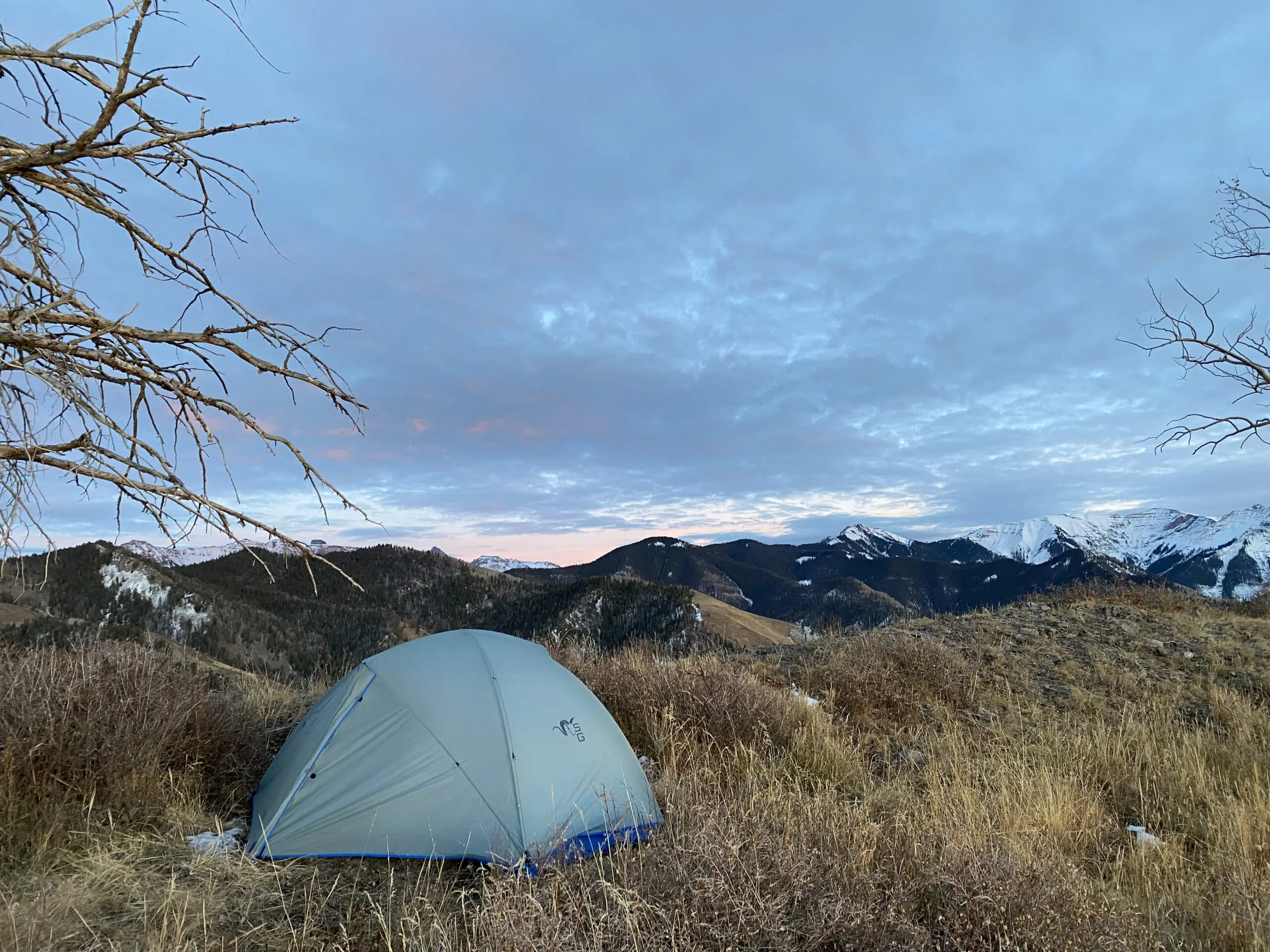
NOTICE: Certain links on this post may earn a commission for Western Hunter Magazine from Amazon or our other affiliate partners when you make a purchase. Thank you for your support.
Stone Glacier Skyscraper 2p Tent Review
I checked the weather just before I lost service driving through the mountains. It called for snow above 9,000 feet starting at midnight and going until 8 am. After a relatively short hike to 9,600 feet, an elevation that I felt would help me acclimatize to the mountains after driving straight through from the low valley of Phoenix. I dropped my camp stuff and began my evening glassing, not far from my intended camp location.
After an evening glass, I slipped back down to my pile of compression sacks and began pitching my Stone Glacier Skyscraper 2P tent. Knowing the storm was coming, I cinched down the web truss and rain fly of the skyscraper. After attempting to pound a stake into the ground and failing miserably on the rock-hard ridge line I resort to stacking rocks on the loops intended for stakes. Eighteen rocks later, and it was fairly well taut. After a hearty meal, I slid into my sleeping bag, and headed to bed for the night.
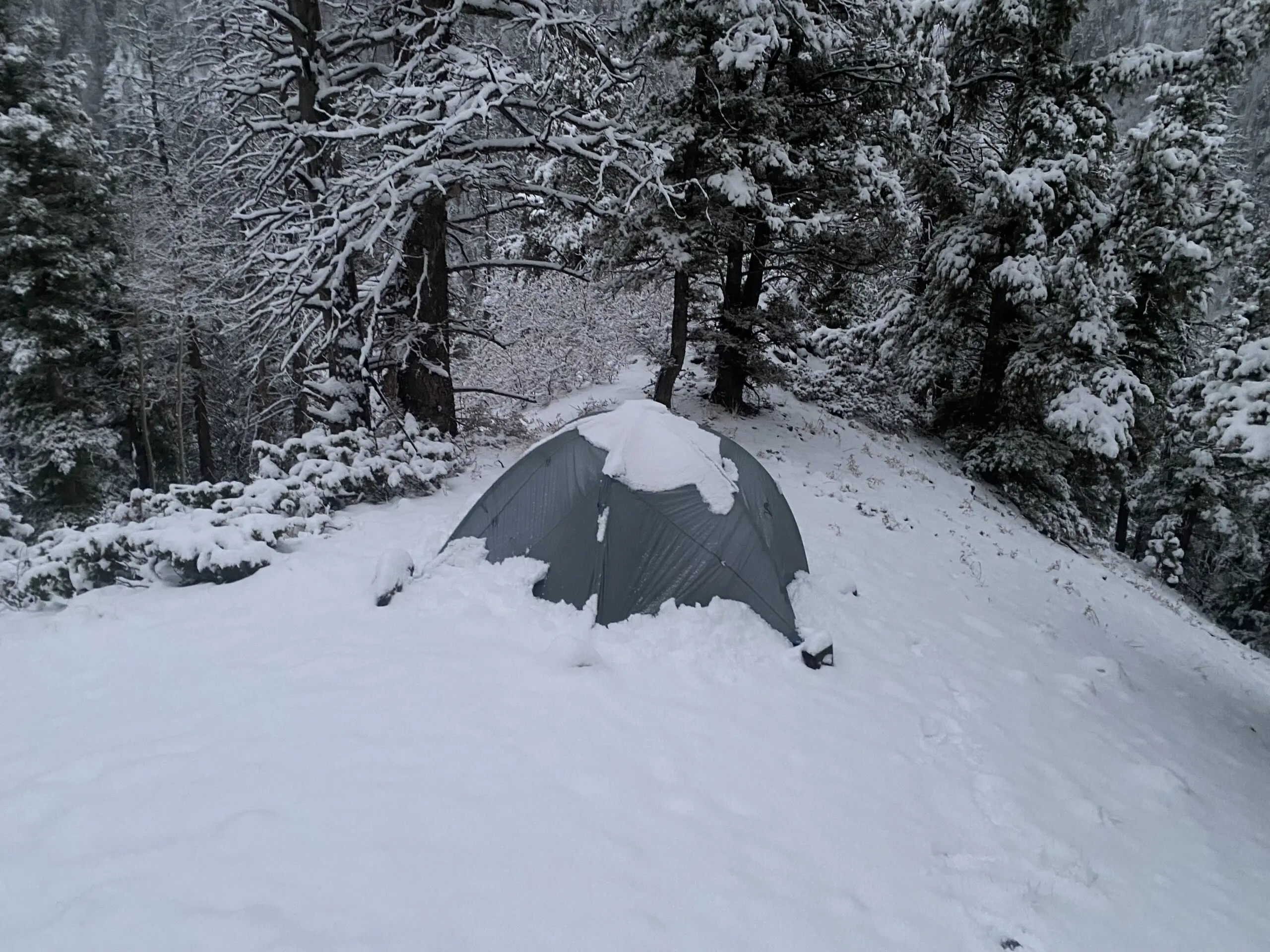
At nearly midnight to the dot, I woke up to a tiny sprinkle on the face of the tent. The storm was here. 5:45 AM rolled around and I woke up to my alarm. The temps in the morning were supposed to be in the mid to low teens, but I couldn’t believe how warm the inside of the tent felt. My water wasn’t frozen in the slightest, my boots were moist from the day before, and there wasn’t any chill on my nose. There was no slight sprinkling noise from the supposed storm outside.
I figured the storm blew out early and warmer temps must have already set in, but as I reached up to grab my headlamp from the netting above my head, I bumped the side of the tent and heard a slide and poof noise. Curious about the sound, I bumped the inner tent liner again. VSH! and POOF! once again. After I repeated this odd sequence a few times, I heard the sprinkle that I expected. The storm didn’t blow out early, I had been completely encased in an igloo of wet heavy snow about 8 inches thick. The snow had insulated the tent making it a nice little den for the previous 5 hours.
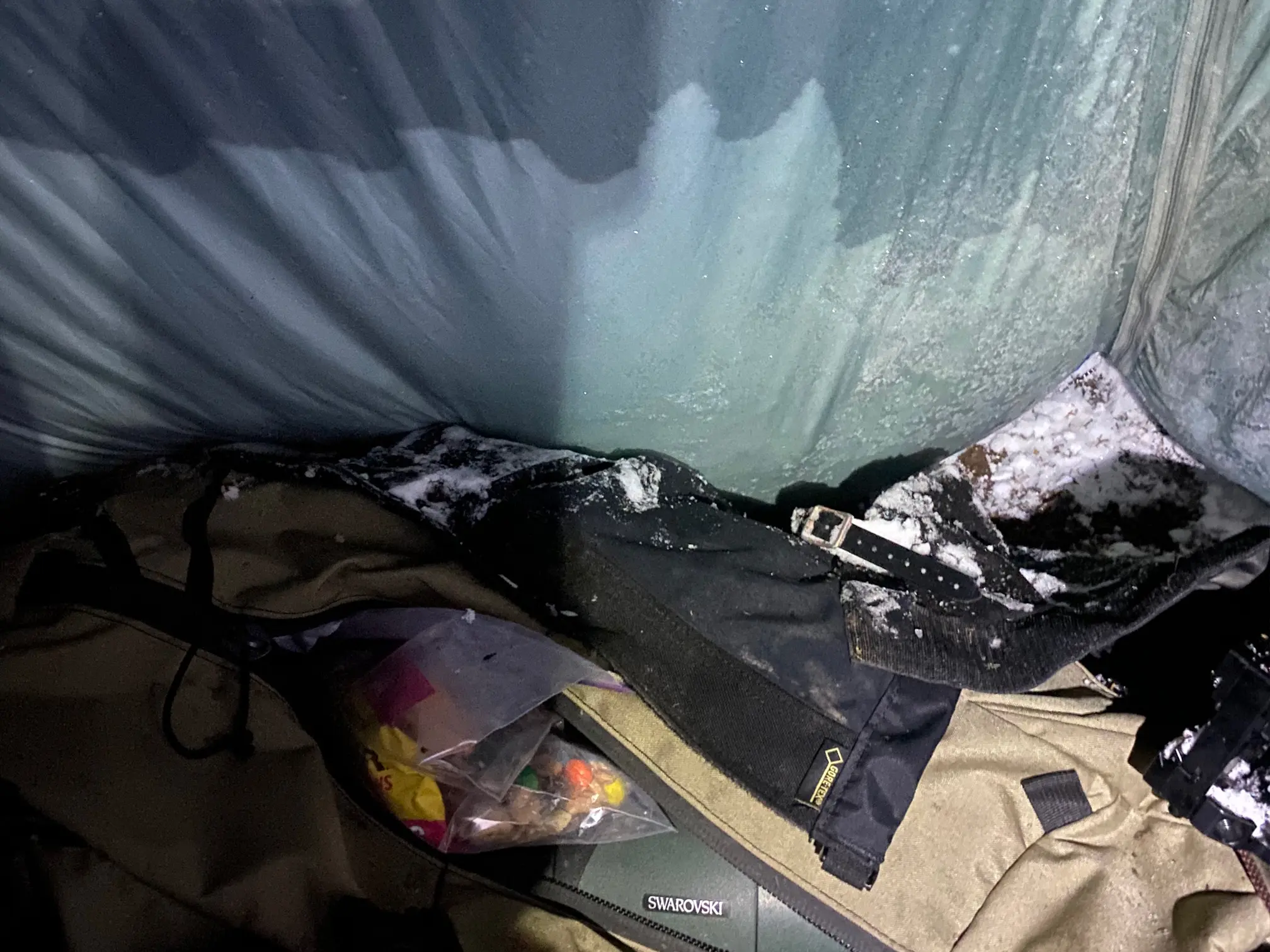
After patting the inside liner of the tent for a solid ten minutes, then pushing the snow off the door of the vestibule for another five, I finally emerged into the new world of wet heavy snow that had fallen overnight. The tent was mostly clear of any snow on top but was sporting a nice ring of probably 60 pounds worth of wet snow around the base of it.
With 4 miles and 2,000 feet of elevation to gain, I packed up my gear and headed up to my next camp. I got an inreach update with the weather for the next night which was calling for nearly the same as the previous night. Only this time it was a fairly safe bet I’d have more snow because of the elevation.
The next morning I woke up to exactly what I had expected, ten inches of snow. This time it wasn't wet and heavy but light and powdery. I did my same routine of patting the inside of the tent, pushing the snow off the vestibule and emerged from my snow cave.
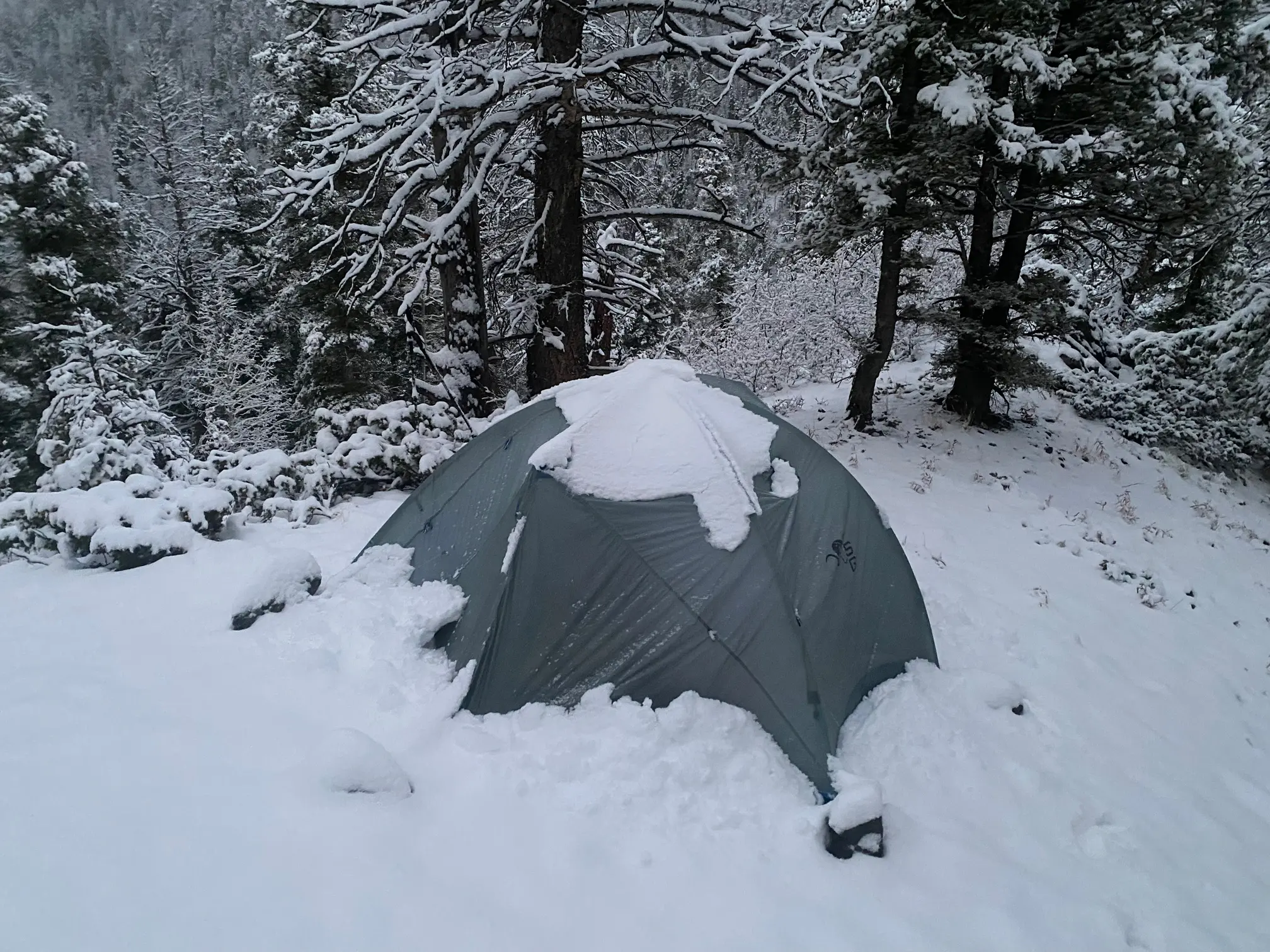
With 10.65 mm DAC poles, these couple of nights were easy work for the Stone Glacier Skyscraper 2p Tent. The tent started to flex the smallest amount with the 8 inches of wet heavy snow on the first night, but I didn’t even notice this untill I began clearing the snow from the tent. The second night, with 6 good staked-down anchors, the tent never lost shape even in the slightest. If I were to go back in time I may have run a few guy lines from a couple of the many points, on the tent, just for peace of mind.
After spending 8 nights in the tent, I began to appreciate the large door openings and large vestibules. Scraping your back on the top of the door while you’re getting out not only doesn’t feel great, but it also puts unnecessary stress on the zippers and tension points of the tent. The dual extra-large vestibules are an absolute necessity for a 4 season tent. I hauled about 72 pounds up the mountain for most of this hunt, so I needed a lot of space to dump my stuff while I was in the tent. I was able to keep my pack with full day hunting gear on one side, rifle, cooking setup, and all the trash I accumulated on the other side. This, along with the 6 mesh pockets on the inner layer of the tent kept all of my gear organized and clean.
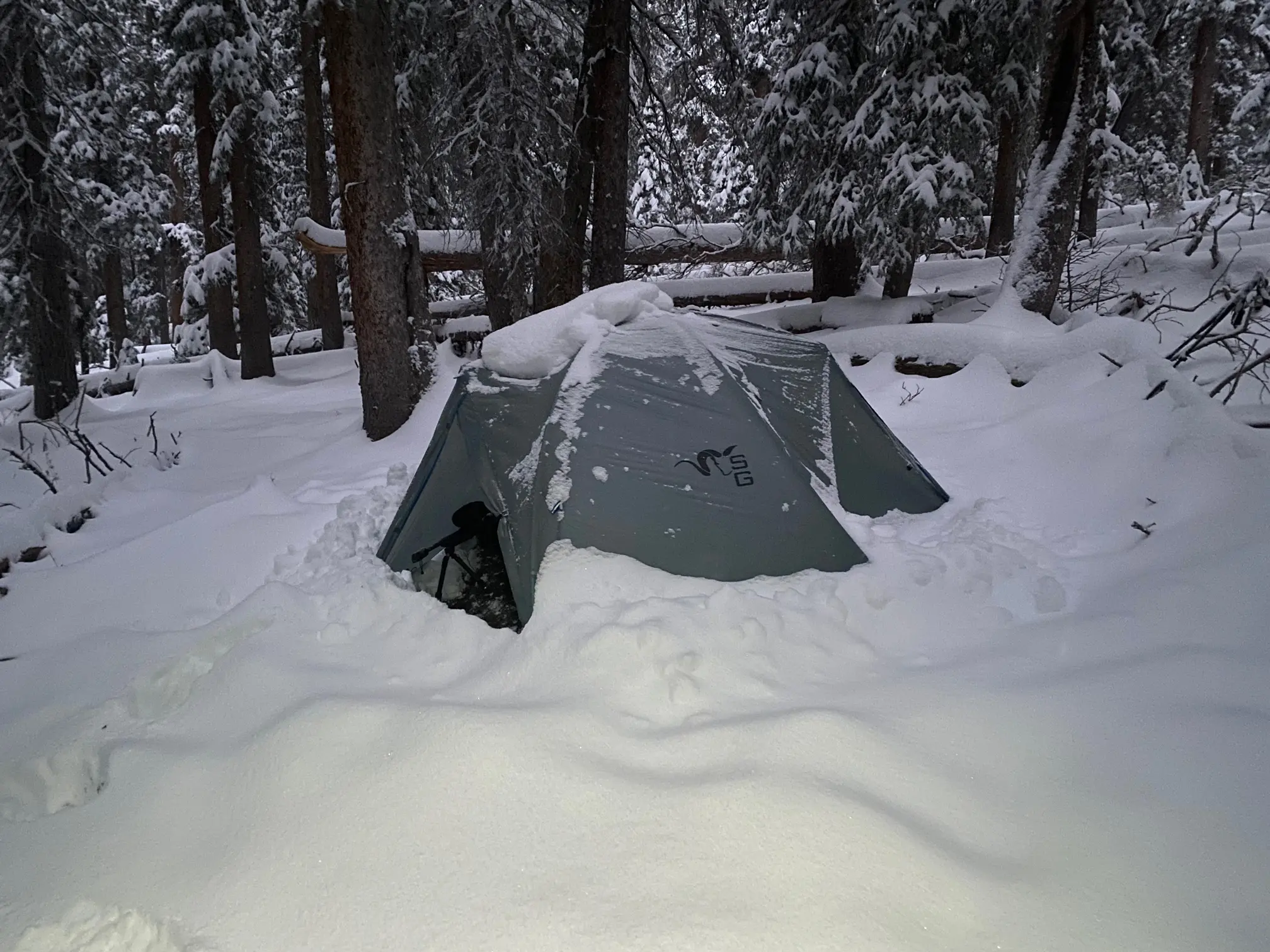
To be quite honest, it’s hard for me to find a drawback with this tent. It’s light for a 4 season tent, packs down well, structurally sound, and doesn’t break the bank compared to most of its competitors. If I had to nitpick one thing, it would be that it can be a slight pain to get the poles in their grommets on each corner of the tent. The corners of the tent are stretched to their max to maximize room, so it takes a little elbow grease, and proper hand placement, to get the poles stuck in.
If you plan to spend any amount of time backpacking in harsh weather conditions, I strongly suggest you take a look at the Stone Glacier Skyscraper 2p tent. It has all the features you would be looking for and more. Check it out at Blackovis.com, and feel free to reach out to me with any questions you might have.

